This month we will continue the series of articles covering basic electrical inspection items. Article 410 is another example of an article in Chapter 4 of the NEC that often doesn’t get a lot of emphasis from multi-trade inspectors. However, the requirements within this article are important to know and enforce. Many of the items have been created directly as a result of disaster conditions through history.
Please take time to read the scope of this article in 410.1. I will not go into detail here, but the scope has a laundry list of items and you will find that it is pretty exclusively related to lighting products and devices. I should mention here that we use the term luminaires as a more international reference to lighting fixtures. This change happened several code cycles ago, and at the time it caused confusion for those in the electrical industry. This term is not to be confused with “luminary,” which is defined as an important person. The term luminaires is recommended by the International Electrotechnical Commission.
The first definition found in 410.2 is for closet storage space. Everyone knows what a closet is, right? Is a small pantry with a door in your kitchen considered a closet? They look the same in size and design, especially during construction. However, the only requirements for luminarie installations in closets appear in section 410.16, which specifically addresses luminaires in clothes closets. In Article 100 we find the definition for a clothes closet, which is a non-habitable room or space intended primarily for the storage of garments and apparel. However, I’ve had inspectors try to apply the requirements for closets in 410 to other locations. Now let’s review the definition in 410.2, which further defines what “closet storage space” is within a clothes closet. If you try to read the definition, it might be a little confusing trying to imagine the shape from the language. Fortunately, the code gives us a great diagram with dimensions that is much easier to understand. For inspections related to location of a luminaire within a closet, we can’t install the luminaire within the modified cube shape described in the definition.
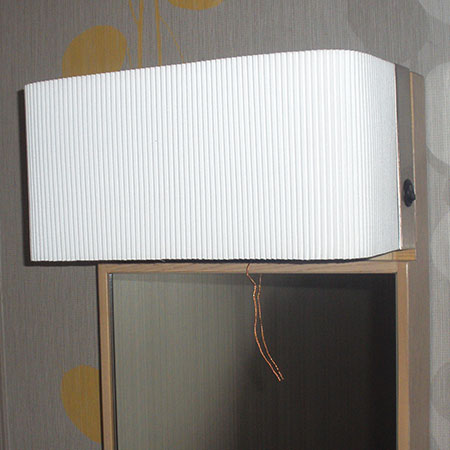
The next important item is 410.6, which states that all luminaires and lamp holders shall be listed. This often leads to problems, such as when we have special luminaires used inside casinos, hotels and other large facilities where the units are actually a piece of artwork with lights attached. More times than not, these custom one-of-a-kind units are not typically listed and labeled by a Nationally Recognized Testing Laboratory (NRTL). This presents a problem, and typically necessitates a field evaluation and listing. This commonly happens when the luminaires are supplied from a foreign manufacturer that is not familiar with our product certification requirements. Like I’ve mentioned before, be proactive when you are starting a new project and let the contractor know from the beginning (before the products show up on the jobsite) that you will be checking for this.
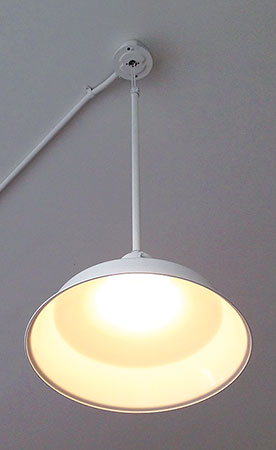
Part II of Article 410 deals with locations of luminaires and some of the conditions related to certain locations due to the hazards that may be involved. I’m not going to cover every one of these items in detail, but please be aware that units installed in wet or damp locations have to be listed for the appropriate location and should prevent water from entering a wiring compartment. Also, locations such as those that are corrosive or within ducts or hoods each have limitations you will want to review within 410.10 if inspecting these areas. There are issues related to combustibles due to the heat that is generated by traditional lighting methods. One category that is a fairly new concern is indoor sports, mixed use and all-purpose facilities that may utilize mercury vapor or metal halide lamps. There is a concern that the lamps may fail in such a way that debris may fall onto people or combustible surfaces. Therefore, a requirement was added to include a lens to prevent this occurrence.
There are two specific locations I want to cover in this article. The first is related to locations in and near bathtub and shower areas. The details are found in 410.10(D), where we describe a zone in which no luminaire may be installed. That zone is 3 feet horizontally and 8 feet vertically from the tub rim or the shower threshold. So, we have to picture the cube directly over the tub or shower, extending 3 feet out from the edge and 8 foot above the unit. If the ceiling height is adequate to allow a luminaire to be installed above the 8 foot zone, the luminaire must be listed for damp locations; if subject to shower spray, the luminaire must be listed for wet locations. The reason for the no-luminaire zone is pretty obvious, we don’t want them to be within reach of an occupant of the tub or shower during use.
The second location to cover in detail is clothes closets, which is found in 410.16. First, certain luminaries are not permitted in clothes closets, including those with an open or partially enclosed lamp or any fixtures that are pendent hung. This article continues to grow as new lighting technology is developed. As we mentioned earlier, we have a definition for closet storage space. Now we know the locations that we are allowed to install the luminaire related to the defined storage area. Depending on the type of lighting used, whether incandescent, fluorescent, or LED, surface-mounted or flush-mounted, this section lists clearances to the nearest storage space. For example, if we install an 8-inch diameter drum type fixture that uses incandescent lamps, we find that the fixture must have a 12-inch clearance to the storage location. Usually we found that the shelf depth in the tract homes we inspected was more than 12 inches, so we had to check the clearance of these closet fixtures during a final inspection. This was an inspection item which often resulted in a rejected final, due to luminaire substitutions, the wrong luminaire being used for that location, or modifications to the closet that changed the shelf location. The idea with this code requirement is that we don’t want a heat source, the luminaire, to be in contact with anything that may be stored there. Often we find shelves that hold cardboard boxes or garments that are easily ignited if in contact with a heat source. Since the closet doors are generally closed, if the fixture is left on and overheats items in the closet, the resulting fire could go unnoticed for quite some time.
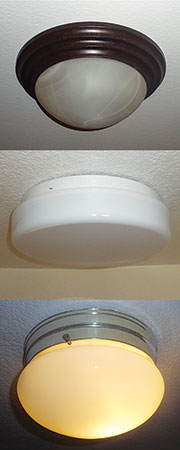
A brief note regarding 410.18 Space for Cove Lighting: the code states that cove lighting shall have adequate space so that lamps and equipment can be properly installed and serviced. Having been a contractor for several years, I was often exasperated at whoever designed a location for lighting to be installed that you physically could not get to in order to service it, especially some of the cove lighting in restrooms where the installed stalls and plumbing fixtures created great obstacles to work around. For the AHJ, this is once again one of those judgment calls.
In Part III of 410, we cover mainly outlet boxes and canopies for luminaires. For common inspections, it is important to verify that the outlet boxes are covered; this is usually done by the fixture and/or the canopy. Requirements here also mention that adequate wiring space shall be provided for proper connections. Remember that the canopy will be included in the volume requirement, so the box and the canopy together provide the space. There are other requirements in each of these parts that I encourage you to review, since this article only covers the highlights.
Part IV is titled Luminaire Supports. The main item I want to cover here is the poles used to mount area lighting. If you are tasked with doing inspections for parking lot lighting, you need to be familiar with a few items. First is the requirement for properly sized handholes, which allows the installer to make the circuit conductor connections and— most importantly—the grounding connections. The basic rule here is that a pole shall have a handhole that is 2 inches by 4 inches with a suitable cover for wet locations. There are a couple of exceptions, so please review these. The grounding terminations within the poles are often difficult to install and also inspect. Since most poles are metallic, you absolutely have to make this inspection to insure they are grounded. These poles are likely to be touched by the general public, and if a fault occurs a person could be seriously injured or killed.
Part V reviews the grounding requirements and basically states that if a luminaire or lighting equipment has metal parts, it shall be grounded.
Parts VI through IX deal with items generally covered by the manufacturers of the luminaires. Items such as marking for electrical ratings and warnings for combustibles, conductor and cord usage, and connections are covered. I will not cover each of these here, please review them on your own so that you will be aware of what is in this part of the code. Then, if you see something that just doesn’t look right during an inspection, you will know where to go to verify the code requirements.
The next key item to address is the use of flush and recessed luminaires, and Part X has special provisions for these. These are very commonly used in residential construction and are a very important part of the residential inspection process. One of the requirements is that these units must have a thermal protection device that will disconnect the lamp if the temperature limit is exceeded. Recessed lighting is an item I emphasize as one of the most important items for inspections. The issue here is that these luminaires have the possibility of generating a lot of heat, and the lamp is designed to be installed inside a metallic housing, which is then installed at the top of a room in the ceiling. As we all know, heat rises, and a heat pocket is created within each fixture. Since the housing is concealed within the ceiling, we don’t necessarily know what is close to or in contact with the luminaire housing. The last thing we want is to have a heat source that may ignite some material within the ceiling and cause an attic fire. In 410.16, Clearance and Installation, the requirements are covered depending on the type of luminaire. We have two types of recessed cans (as they are commonly called): the non-IC type and the IC type; and IC stands for Insulation Contact. So on a non-IC type we must have a 1/2 inch space from any recessed parts to combustibles, excluding the support or finish trims. Also in part (B), the clearance to any insulation is required to be at least 3 inches. This becomes a challenge because insulation has the tendency to go everywhere if it is blown in; or if it is batt insulation, it may eventually fall onto a fixture.
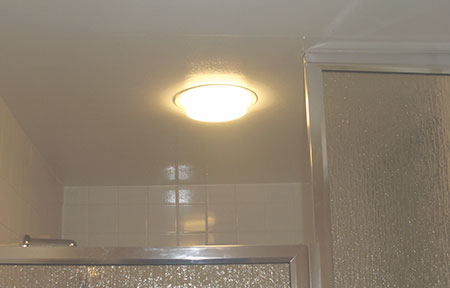
Type IC fixtures are designed to be installed in such a way that they may have insulation directly in contact with them. One word of caution with IC rated cans: make sure the proper size lamp and the matching trim is used, as these are tested using specific lamp and trim combinations to insure they do not overheat. A common problem here is that a contractor will use a particular brand of recessed can, and then trim them out with a different brand of trim; since those items were not tested together, this is a violation of the IC listing of the recessed can. While it may be possible to list them together, I haven’t seen a fixture that is listed for another manufacturer’s trims. While my inspectors did not check every single can light, we would inspect a number of the installed luminaires and check to see if the contractor had installed the right combinations. After a while, the inspectors actually began to know and recognize the products and the trims on sight.
A couple of notes here from field experience: if the resident complains that the luminaires are shutting off and on randomly, it is likely that the lamps are oversized for the luminaire or the wrong trim is being used. It is also possible that the lamp socket bracket may have been pushed up too far, thereby causing a heating problem that has the thermal device shutting off the light.
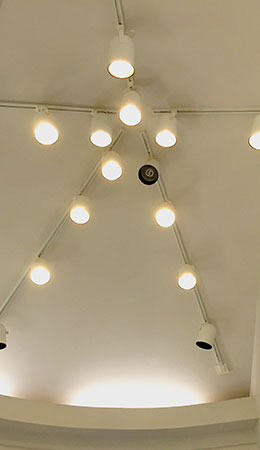
Another issue when doing inspections is verifying that the required insulation clearances are present. This is usually not an issue on 6 or 7 inch recessed cans, as they are typically IC rated and easily checked. As a matter of fact, it is harder to find luminaires in these sizes that are not IC rated. However, in locations such as small alcoves or similar areas where 4 inch cans are installed, we may find problems. For some reason, these are not commonly purchased with an IC rating. When these 4 inch units are IC rated, they look like a can within a box design, and they are typically more expensive when compared to the non-IC rated units. If they don’t say “IC Rated” on the luminaire, then the inspector should make sure there is a definite method to prevent insulation ever coming into contact with the luminaire. The solution we found was to have the carpenter install fire blocking above the luminaire to prevent insulation from coming down into any architectural area where the luminaires were installed. If they were installed in a ceiling, we had the installer frame a box out around the fixtures to maintain the required 3 inch clearance from insulation.
Part XII Special Provisions for Electric-Discharge Lighting System of 1000 Volts or Less includes 410.130(G) Disconnecting Means. This requirement affects double ended fluorescent lamp luminaires. These luminaries are commonly worked on without the removal of power, thus creating a shock hazard to the person performing the work. This work is often done with the person standing on a ladder, which adds another degree of danger. Many times workers who are shocked don’t die from the electrocution, but from the fall. Therefore, these fixtures now require a disconnecting means. Five exceptions exist in the 2011 Code, so please review.
You might ask why this requirement applies to double ended lamp units only. What about single pin lamps? The design of the single-end luminaires is such that the non-spring tombstone (where the pin inserts into the lamp holder) has two contacts; one is the line voltage and the other is connected to the ballast. In this case, the power to the ballast is disconnected when the lamp is removed. In other words, the lamp is the disconnect.
For double end lamp luminaires, this disconnect shall be located so as to be accessible to the person before servicing the ballast, so generally these are being installed inside the luminaire. Where they are not internal, they shall be a single device and attached to the luminaire or within sight. This requirement provides a safe method to service the ballast, and continues to be extended in its enforcement, adding that in existing installations the disconnecting means shall be added when ballast replacement is performed. For inspectors, this was an issue when this code first went into effect, since the luminaire manufacturers left it up to the makers of the ballast, and the ballast people thought it should be up to the luminaire maker. So at first, the contractor had to field install these devices, but eventually manufacturers started to ship units with the disconnects installed.
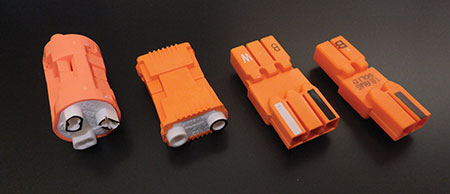
The last item I will cover in this article is Part XIV Lighting Track, or as it is more commonly called, track lighting. The first requirement is that it is to be installed permanently and permanently connected to a branch circuit. This may create inspection issues, as I’ve seen these cord- and plug-connected and hung in various ways that I didn’t consider permanent. Another requirement is that track fittings are not to be equipped with general purpose receptacles, which would make them more like a branch circuit. If you see a cord plugged into a device on a track—that is a violation. Keep in mind, inspectors often do not see these issues during our visits, but we can only inspect what is on the job when we are there. Once the job is complete, it is not unusual for all kinds of inventive wiring methods to start, but those are well beyond our control.
Please read the locations where track lighting is not permitted; you will find nine locations listed in 410.151(C). The two that stand out are “where subject to physical damage,” which to date the NEC can’t or won’t define, and “wet or damp locations.” When inspecting the supports, please remember 410.154 Fastening, which states that it shall be securely mounted so that each support is suitable for the weight of the luminaires that can be installed. Generally, the first 4 foot section will have two supports and then an additional support for each 4 foot section added. Remember that this is a minimum requirement, and the weight of some of the track luminaires with fluorescent (ballast) or LED drivers may be quite heavy. A toggle bolt pushed through a lay-in ceiling tile will likely not be adequate.
Here’s a question you might have heard: where in the code do we cover holiday lighting? You probably guessed—it is the last item in Article 410, and it states that holiday lighting shall be in accordance with Article 590.3(B).
One note I’d like to add regarding these inspections. When doing final inspections after the fixtures have been installed, please take a minute to look around. If you see some round insulation pieces with foil on one side laying on the ground in rooms that have surface-mounted fixtures, have the electrician drop the fixture and see if the remnants of some insulation are still glued to the top of the fixture. Along with making sure they have used lamps that are not larger than the luminaire allows per its listing and labeling, these little foil-covered insulation pieces are part of the fixture and are there to ensure we don’t have heat transfer from the lamp to the wire terminations. If we miss this, then there may be an issue that can lead to a fire. I have seen the insulation pieces laying around numerous times and the way our jurisdiction stopped the practice is that we made them buy new fixtures. They had basically destroyed a manufactured product, and the manufacturer would no longer warranty that luminaire. Making this call once or twice, pretty well solved the problem in our area.
Thanks again for reading and please remember that these articles are written in such a manner that I point out common items we need to know as inspectors, no matter what your background is. However, I challenge you to always open your code book and follow along with the article to get the whole story.





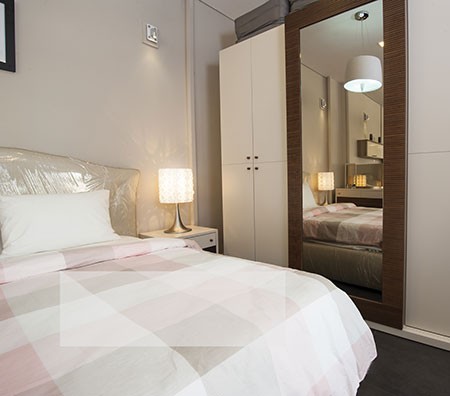






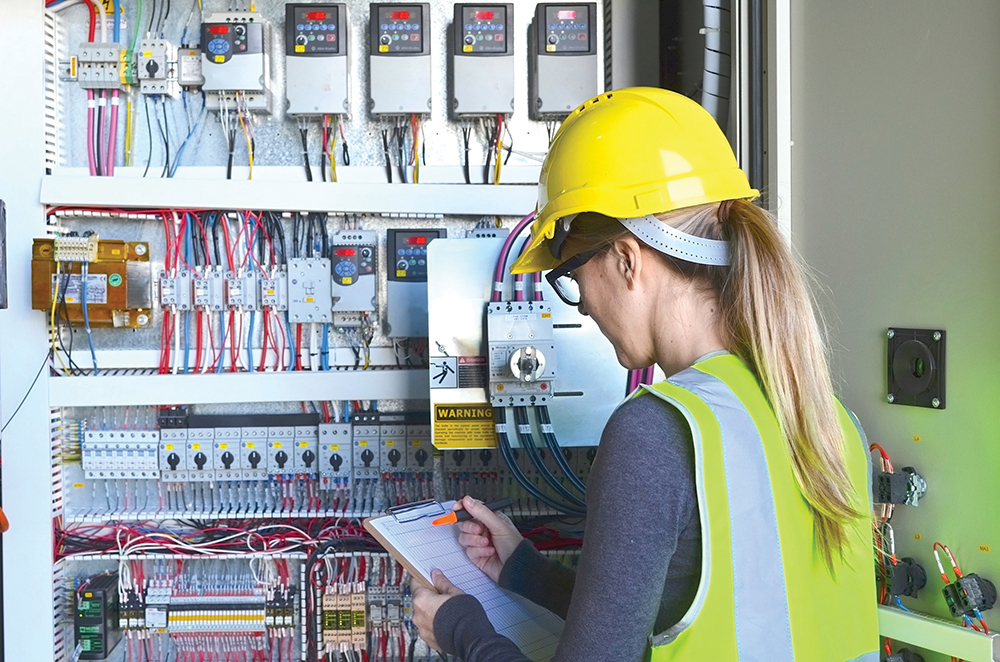
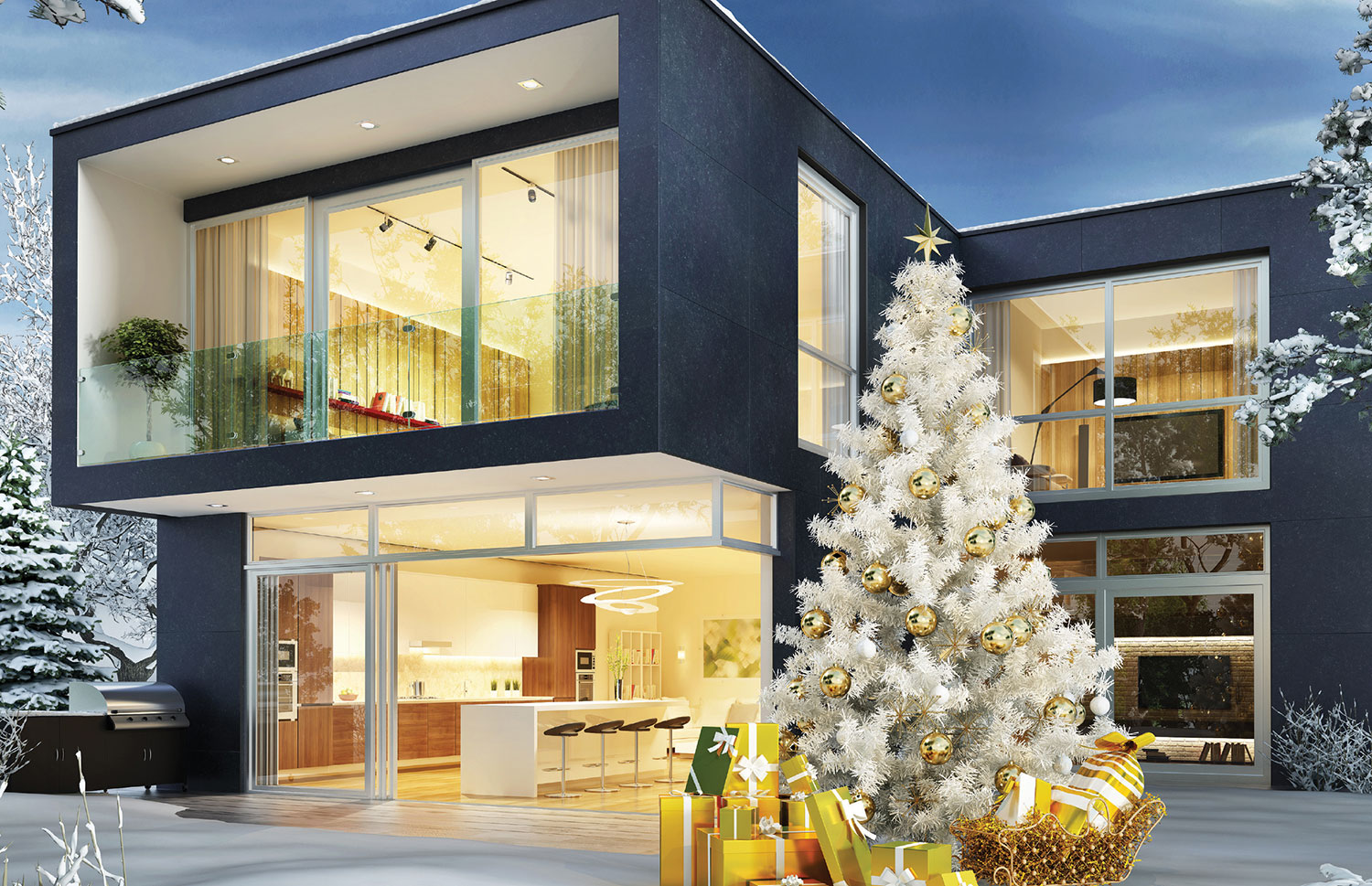

Find Us on Socials